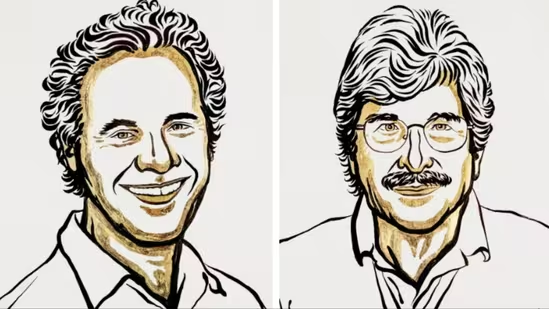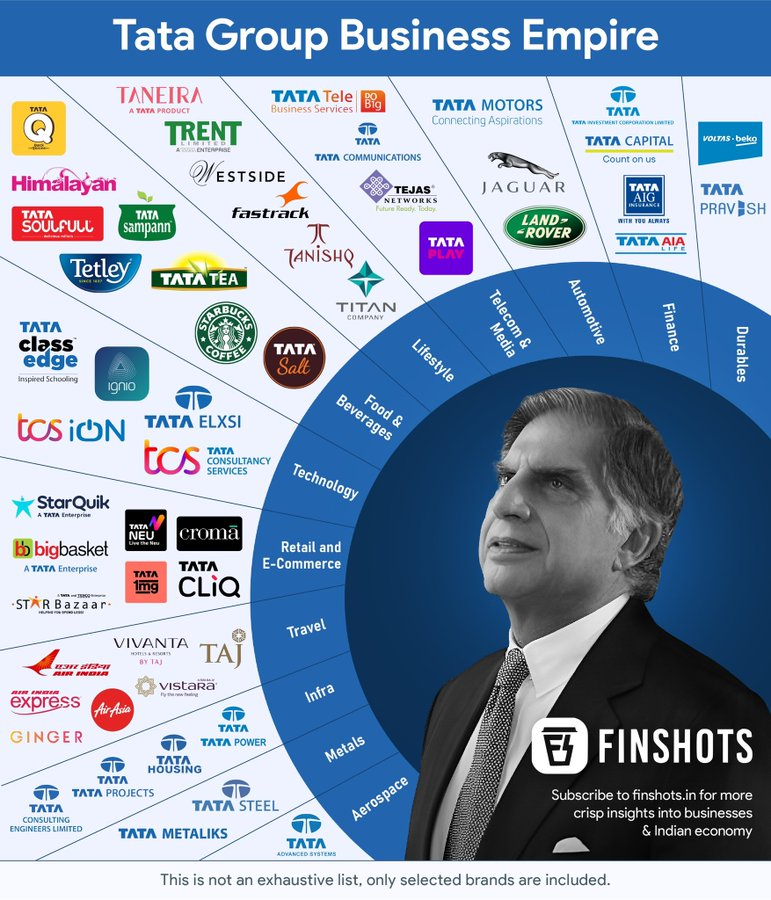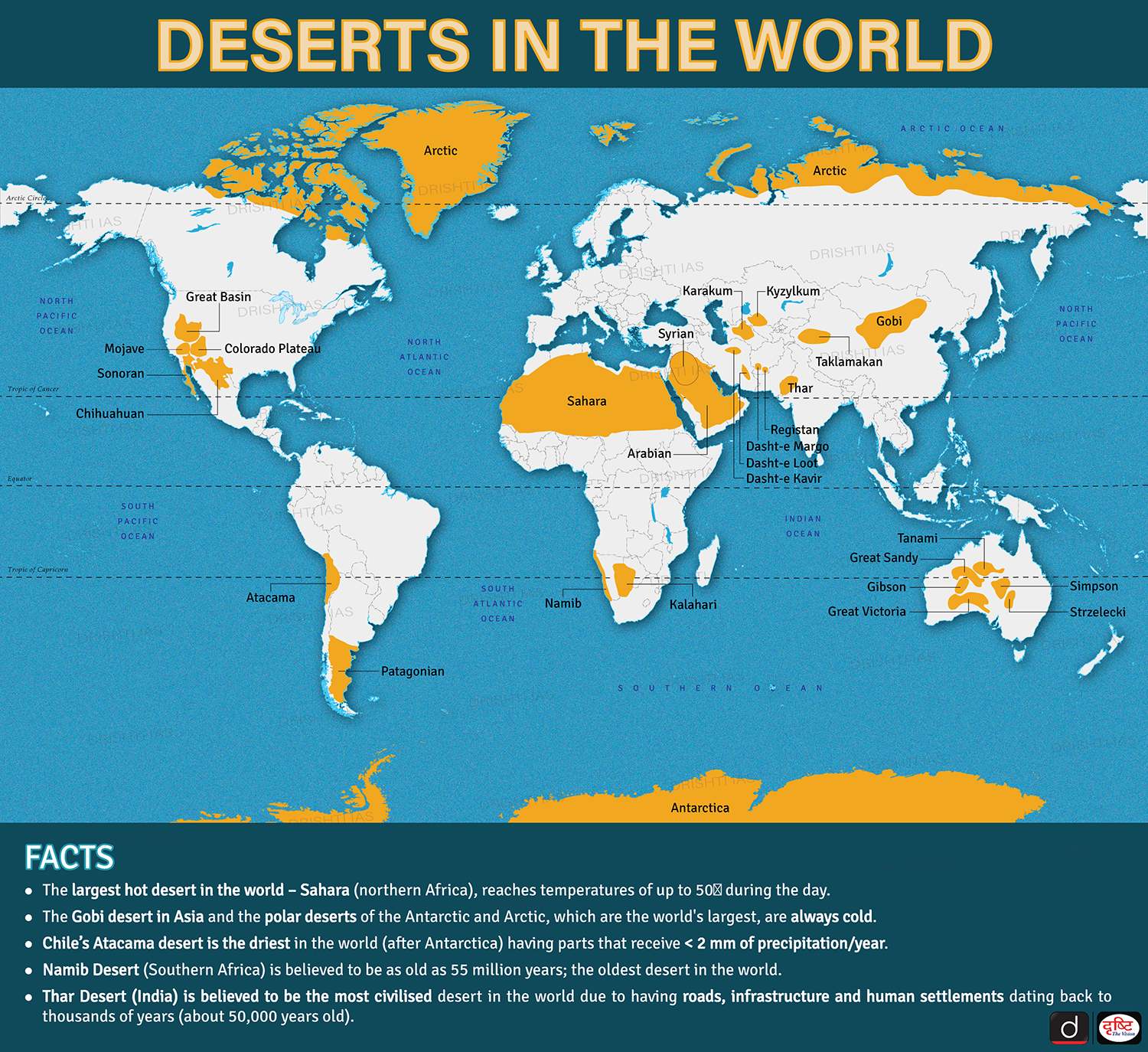Agriculture
Floriculture in India
For Prelims: Floriculture, Paddy, National Botanical Research Institute, APEDA, National Horticulture Board, Per Drop More Crop
For Mains: Floriculture Sector, Agricultural Marketing, Economic Transformation through Crop Diversification
Why in News?
The Jujumara region in Odisha's Sambalpur district is home to one of the first Farmer Producer Organizations (FPO) in the state dedicated exclusively to floriculture, transitioning from traditional paddy farming.
- With support from the National Botanical Research Institute (NBRI), local farmers are adopting flower cultivation, resulting in significant economic improvements.
How is Floriculture Transforming Jujumara's Economy?
- Diversification of Income Sources: Farmers are transitioning from traditional paddy farming to flower cultivation, reducing dependence on a single crop and enhancing income stability.
- Economic Benefits: Profits from flower cultivation can exceed Rs 1 lakh per acre, compared to around Rs 40,000 per acre from paddy farming, significantly boosting farmers’ incomes.
- Market Adaptation: Through platforms like WhatsApp groups, farmers receive updates on market trends, enabling them to make informed decisions about production and sales.
- Sustainable Practices: The integration of beekeeping alongside floriculture promotes biodiversity and provides an additional income stream for farmers.
What is Floriculture?
- About: Floriculture involves the cultivation of flowering and ornamental plants for various purposes, such as direct sale, cosmetics, perfume, and pharmaceutical industries.
- It includes seed and plant material production through techniques like cutting, grafting, and budding.
- The Agricultural and Processed Food Products Export Development Authority (APEDA), the nodal organisation for promotion of agri-exports including flowers.
- Market of Floriculture in India: The government of India has identified floriculture as a “sunrise industry”.
- About 297 thousand hectares of the area were under Cultivation for floriculture in 2023-24 (2nd Advance Estimate).
- India exported around 20,000 metric tonnes of floriculture products worth Rs 717.83 crores in 2023-24, with major importers including the United States of America (USA), the Netherlands, the United Arab Emirates, the United Kingdom, Canada, and Malaysia.
- Due to the exceptional performance of the sector, it is expected to grow to USD 5.9 billion by 2030 with a Compounded Annual Growth Rate (CAGR) of 7.4% (2021-2030).
- Varieties: India's floriculture industry covers cut flowers, pot plants, bulbs, tubers, and dried flowers.
- The important floricultural crops in the international cut flower trade are Rose, Carnation, Chrysanthemum, Gargera, Gladiolus, Gypsophila, Liatris, Nerine, Orchids, Archilea, Anthurium, Tulip, and Lilies.
- Floriculture crops like Gerberas, Carnation, etc. are grown in greenhouses. The open field crops are Chrysanthemum, Roses, Gaillardia, Lily Marigold, Aster, Tuberose, etc.
- Greenhouses are inflated structures covered with transparent material, where crops are grown under controlled environmental conditions.
- Leading Floriculture Regions: Karnataka, Tamil Nadu, Madhya Pradesh, West Bengal, Chhattisgarh, Andhra Pradesh, Gujarat, Uttar Pradesh, Assam and Maharashtra have emerged as major floriculture centres.
What are the Key Challenges in India's Floriculture Industry?
- Low Knowledge Base: Floriculture being a relatively new concept, scientific and commercial floriculture is not well-understood, leading to inefficiencies in production and marketing.
- Small Land Holdings: Most floriculture farmers have small land holdings, limiting their ability to invest in large-scale, modern cultivation practices.
- Unorganised Marketing: The marketing system is fragmented and lacks organised platforms like auction yards and controlled condition storage facilities, making it difficult for farmers to get fair prices.
- Although India has a large domestic market, it lacks modernised marketing systems to handle surplus production and meet increasing quality demands.
- Inadequate Infrastructure: Poor post-harvest management and lack of cold storage lead to quality degradation, especially in flowers grown for domestic markets.
- Biotic and Abiotic Stresses: Flower production in open fields exposes crops to various stresses, making the produce less suitable for high-quality export markets.
- High Initial Costs: Commercial floriculture requires heavy investments in infrastructure, and farmers struggle to access affordable finance options. More schemes like the soft loan initiative by the National Horticulture Board are needed.
- Export Barriers: High air freight rates, low cargo capacity, reduce the global competitiveness of Indian floriculture products.
What are India's Initiatives for Floriculture?
- APEDA (Agricultural and Processed Food Products Export Development Authority): Supports floriculture exporters with cold storage, freight subsidies, and infrastructure development.
- Council of Scientific & Industrial Research (CSIR) Floriculture Mission: It is a nation-wide mission being implemented in 22 states with an aim to enhance the income of farmers and develop entrepreneurship through high value floriculture utilising CSIR technologies.
- FDI in Floriculture: 100% foreign direct investment (FDI) under the automatic route is allowed in the Floriculture sector making the investment process much easier for the foreign investor.
- Integrated Development of Commercial Floriculture Scheme: Provides access to quality planting material, promotes off-season cultivation, and enhances post-harvest management.
Way Forward
- Essential Service and Market Modernization: Flowers should be classified as essential services, like fruits and vegetables, to ensure uninterrupted supply and sales during crises such as lockdowns.
- Floriculture markets need modernization through solar-powered air-cooled pushcarts, and improved packaging with foldable crates.
- Micro-Irrigation and Mulching: Extend the "Per Drop More Crop" initiative to floriculture by bringing all flower cultivation under micro-irrigation.
- Mulching (covering the topsoil) techniques should be promoted to reduce labour, improve water use efficiency, and minimise weed.
- Skilling: Train tribal women and unemployed youth in dry flower production under "Skilling India" and "Standup India."
- Support for Quality Planting Materials: Promote certified nurseries and tissue culture labs to ensure virus-free planting materials. Strengthen biosecurity standards and ensure the availability of quality planting stock for commercial floriculture.
- Flori-Malls and Value Addition: Create integrated "Flori-Malls" with cold chains, essential oil extraction, pigment extraction, and vermicompost units.
- This will help farmers turn excess flowers into products like dyes, gulkand (the sweet preserve of rose petals), and dry flowers, adding value and reducing wastage.
|
Drishti Mains Question: Discuss the significance of floriculture and its role in transforming the rural economy. |
UPSC Civil Services Examination, Previous Year Questions (PYQs)
Mains:
Q. What are the present challenges before crop diversification? How do emerging technologies provide an opportunity for crop diversification? (2021)
Infographics
Biodiversity & Environment
High-Performance Buildings (HPBs)
For Prelims: High-Performance Buildings, HVAC System, Daylight Harvesting, Green Walls, Bureau of Energy Efficiency, Carbon Emissions, UNEP’s 30% Efficiency Improvement Goal, Unnati Building, Indira Paryavaran Bhawan.
For Mains: Need for high-performance buildings in India in light of rising urbanisation and carbon emissions.
Why in News?
In recent years, the importance of high-performance buildings (HPBs) have increased that promote energy efficiency and healthier indoor environments.
- HPBs means a building that integrates and optimises all major high-performance building attributes, including energy efficiency, durability, life-cycle performance, and occupant productivity.
What are the Key Features of HPBs?
- Energy Efficiency:
- Maintain HVAC Systems (Heating, Ventilation, and Air Conditioning): Regular maintenance, such as replacing filters, cleaning coils, and calibrating sensors, can help maintain their efficiency and reduce unnecessary energy consumption.
- Demand-Controlled Ventilation: IoT-based air quality sensors can automatically adjust ventilation systems making buildings more efficient and responsive to environmental conditions.
- Lighting Systems: Energy-efficient LED options can reduce energy consumption. Daylight harvesting, which makes use of natural light, can further lower the need for artificial lighting.
- Invest in Insulation: Adequate insulation for walls, roofs, and floors can reduce the need for heating and cooling by minimising heat transfer.
- Healthy Indoor Environment:
- Prioritise Indoor Air Quality: It uses indoor air filtration systems to reduce pollutants.
- Sound and Acoustics: Sound-absorbing materials and effective partitioning can help reduce noise pollution in buildings.
- Biophilic Design: Incorporating natural elements, such as green walls, indoor plants, and water features enhance the mental well-being of occupants.
- Sustainability and Environmental Impact:
- Sustainable Materials: Recycled steel, sustainably-sourced timber, and low-impact concrete is key to reducing the environmental impact of buildings.
- Water Conservation and Efficiency: Rainwater harvesting and greywater recycling systems enhance water conservation.
- Waste Reduction and Management: Reducing, recycling, and properly managing waste are essential for sustainable building operations.
What is the Need of High-Performance Buildings?
- Carbon Emissions: Globally, buildings account for nearly 40% of total final energy consumption over their lifespan.
- It leads to approximately 28% of energy-related carbon emissions.
- According to the Bureau of Energy Efficiency, in India, buildings account for more than 30% of the national energy use and 20% of its carbon emissions.
- Quadrupling Power System by 2040: India’s power system will need to quadruple in size by 2040 to meet growing electricity demand.
- Also, Indian buildings are experiencing a surge in energy use due to higher urban temperatures, glazed facades, and higher occupant density.
- HPBs can significantly reduce energy demands through innovative solutions.
- Rising Urbanisation: India’s urban population is expected to reach 600 million by 2030.
- As cities expand, the demand for new construction rises, and without intervention, the sector's carbon footprint is set to grow significantly.
- Achieving Global Goals: With increasing energy demand and a booming construction sector, India risks exceeding global energy efficiency and carbon emission standards for buildings set by the International Energy Agency, building certification programs, and the EU’s Energy Performance of Buildings Directive.
- UNEP’s 30% efficiency improvement goal emphasises that the global building sector must improve its energy efficiency by 30% by 2030 to meet climate targets.
- Lower Operating Costs: HPBs optimisations can result in 23% lower energy use, 28% lower water use, and 23% lower building operating expenses.
- Improved Productivity: Providing a healthy indoor environment has been linked to higher occupant satisfaction, increased productivity, and reduced absenteeism due to illness.
What are the Tools Associated With HPBs?
- Ladybug: It offers detailed climate analysis and data in 2D and 3D interactive graphics to assess design options through view, sunpath, and radiation analysis.
- Green Building Studio: It is a cloud-based service that can run building performance simulations for energy optimisation.
- Cove.Tools: It allows architects and engineers to use data-driven design to achieve sustainable design solutions.
- ClimateStudio: It works best for simulations for daylighting, energy efficiency, thermal comfort and other measures of occupant wellbeing.
Notable Examples of HPBs in India
- Unnati Building in Greater Noida: This HPB features a façade designed according to the Sun’s path to improve thermal comfort and energy efficiency. The building uses high-performance glass with a low solar heat gain coefficient to reduce glare and enhance energy performance.
- Indira Paryavaran Bhawan in New Delhi: This building employs an advanced HVAC system that circulates chilled water through beams in the ceiling, utilising natural convection to reduce energy consumption.
- Net-Zero and Grid-Interactive Buildings: HPBs in India are also paving the way for net-zero buildings, which generate as much energy and water as they consume, and grid-interactive buildings that manage energy demand dynamically.
What are the Challenges in Delivering High-Performance Buildings?
- Operational Overlook: Developers typically prioritise initial project costs, schedules, and design scope, overlooking the operational phase and long-term energy, waste management, and maintenance.
- Diverse Building Typologies: Office buildings vary greatly in terms of types, costs, services, and comfort levels.
- Some buildings have decentralised cooling systems that are energy inefficient while some buildings are centrally air-conditioned, have high glazing, and come with higher energy consumption.
- Split Incentives: Energy savings projects often receive little support due to differences in who benefits from energy efficiency improvements. Eg, Maintenance by owners or tenants.
- Erosion of Indigenous Knowledge: Region-specific methods that are cost-effective and well-suited to local conditions are being lost due to overreliance on foreign technologies that may not be as efficient in the Indian context.
- Siloed Building Systems: Building design, construction, and operation are often treated in isolation. This fragmented approach prevents the integration of technologies that can improve overall building performance.
What are India’s Initiatives Regarding the Energy Efficiency in Buildings?
- Eco-Niwas Samhita
- Energy Conservation Building Code (ECBC)
- Energy Conservation (Amendment) Act, 2022
- NEERMAN Awards
- Green Rating for Integrated Habitat Assessment (GRIHA)
How High-Performance Buildings Can be Promoted in India?
- Envelope and Passive Systems: Envelope strategies like wall, windows, roof assemblies, reflective white surfaces and shading can avoid exposures to solar heat gain and glare, and support natural ventilation where possible.
- Integrated Approach: A lifecycle performance assurance process that emphasises the integration of building systems should replace conventional and siloed methodologies.
- Holistic Evaluation: Adopt a triple-bottom-line framework that evaluates building technologies and systems based on operational, environmental, and human benefits.
- This framework should consider energy savings, reduced carbon footprint, and improved occupant health and productivity.
- Collaborative Energy Efficiency Initiatives: Encourage collaborative initiatives between owners and tenants that align their interests in energy efficiency upgrades, creating a shared commitment to sustainability goals.
- Tailored Strategies: Advocate for region-specific, climate-responsive solutions such as high-performance envelope design, low-energy cooling strategies, and adaptive comfort techniques.
- Heating Ventilation and Air Conditioning Systems (HVAC): Separate the spaces that could be naturally ventilated and develop mixed-mode opportunities, rather than fully air conditioning all built spaces at all times.
|
Drishti Mains Question: Critically analyse the need for high-performance buildings in India, considering the challenges posed by rising urbanisation and carbon emissions. |
UPSC Civil Services Examination, Previous Year Questions (PYQs)
Mains:
Q. “Investment in infrastructure is essential for more rapid and inclusive economic growth.” Discuss in the light of India’s experience. (2021)


Indian Economy
51st meeting of RBI Monetary Policy Committee
For Prelims: Monetary Policy Committee, Reserve Bank of India, Repo Rate, Consumer Price Index, UPI123PAY, Non-Banking Financial Companies (NBFCs), Microfinance Institutions (MFIs), Housing Finance Companies (HFCs), Deposit Insurance and Credit Guarantee Corporation, Securities and Exchange Board of India (SEBI), Insurance Regulatory and Development Authority.
For Mains: Monetary Policy Committee Decisions, Issues related to NBFCs
Why in News?
Recently, the 51st Monetary Policy Committee (MPC) meeting of the Reserve Bank of India (RBI) was chaired by the RBI Governor.
What are the Key Decisions Taken at the 51st MPC Meeting?
- Unchanged Repo Rate: Monetary Policy Committee (MPC) decided to keep the repo rate unchanged at 6.5% for the 10th consecutive time.
- Change in Monetary Policy Stance: The MPC changed the policy stance to ‘Neutral’ from ‘withdrawal of accommodation’.
- Neutral stance allows the MPC greater flexibility to adjust monetary policy as needed while “withdrawal of accommodation” means restrictive monetary policy stance where the RBI aims to reduce the money supply in the economy (curb inflationary pressures).
- When the RBI withdraws accommodation, it signals that it is less inclined to support economic growth through lower rates, focusing instead on stabilising prices.
- Inflation Targets: The RBI has retained its Consumer Price Index (CPI) inflation forecast for FY2025 at 4.5%.
- Flexible Inflation Targeting (FIT) was introduced in 2015 to control inflation with a target of 4% (±2%) while allowing temporary deviations to support economic growth.
- Real GDP Growth Projections: The RBI kept its real GDP growth projection for FY25 at 7.2%. India’s growth story remains strong, driven by private consumption and investment demand.
- Hike in UPI123PAY Transaction Limit: The RBI has hiked the UPI 123PAY per transaction limit to Rs 10,000 from Rs 5,000.
- RBI announced a hike in the UPI lite per transaction limit to Rs 1,000 from Rs 500. RBI also hiked the UPI lite wallet limit to Rs 5,000 from currently Rs 2,000.
- UPI 123PAY is a payment system mainly for non-smart phone/feature phone users by which they can make payment using UPI without internet connectivity.
- Reserve Bank-Climate Risk Information System (RB-CRIS): RBI has proposed to create a data repository namely RB-CRIS to bridge the gap in climate-related data that is currently available in a fragmented manner.
- It will undertake climate risk assessments for ensuring stability of balance sheets of financial entities and that of the financial system. It will be in two parts.
- The first part will be a web-based directory listing various publicly accessible meteorological and geospatial data sources on the RBI's website.
- The second part will be a data portal with standardised datasets, accessible only to regulated entities in a phased manner.
- It will undertake climate risk assessments for ensuring stability of balance sheets of financial entities and that of the financial system. It will be in two parts.
- Direction of NBFCs: RBI issued a strong advisory to non-banking financial companies (NBFCs), microfinance institutions (MFIs) and housing finance companies (HFCs), to follow a 'compliance first' culture and take a sincere approach to customer grievances.
- Compliance first culture prioritises adherence to laws, regulations, and internal policies above other business considerations.
Note:
The MPC determines the policy repo rate required to achieve the inflation target while other decisions are taken by the RBI.
- UPI Lite is a new payment solution that leverages the trusted NPCI Common Library (CL) application to process low value transactions.
- UPI lite wallet is a digital wallet where you load money from your bank account to make online transactions.
What is RBI's Stance on NBFCs in the 51st meeting of RBI MPC?
- Growth at Any Cost Approach: RBI Governor expressed concerns regarding the "growth at any cost" mentality prevalent among some NBFCs while ignoring sustainable business practices and robust risk management frameworks.
- Review of Compensation Practices: RBI has directed NBFCs to reassess how they structure their employee compensation, especially regarding bonuses and incentives linked to short-term performance goals.
- The RBI is concerned that such practices may encourage risky or unsustainable behaviours focused solely on immediate results.
- Usurious Practices: Concerns were raised about NBFCs charging high-interest rates and imposing unreasonably high processing fees and penalties.
- Push Effect of Growth Targets: RBI Governor highlighted that aggressive growth targets could lead to retail credit growth that does not align with actual demand.
- It could potentially lead to high indebtedness posing financial stability risks.
- Investor Pressure: Some NBFCs, including MFIs and HFCs are driven by investor pressure to achieve excessive returns on equity (RoE).
- RBI urged NBFCs to adopt sustainable business goals and asked not to compromise long-term sustainability for short-term gains.
What are Non-Banking Financial Companies (NBFCs)?
- About NBFCs: A Non-Banking Financial Company (NBFC) is defined as a company that operates under the Companies Act, 1956 and is primarily involved in providing loans and advances, acquiring financial securities such as shares, bonds, and debentures, as well as engaging in leasing and hire-purchase transactions.
- However, NBFCs do not encompass institutions whose principal business involves agriculture, industrial activities, the purchase or sale of goods (except securities), providing services, or dealing with immovable property.
- Criteria for Classification: NBFC must conduct financial activities as its principal business. This means that more than 50% of its total assets should be in financial assets, and similarly, income from financial assets must exceed 50% of its gross income.
- This classification criteria is often referred to as the 50-50 test.
- Differences Between Banks and NBFCs: Although NBFCs perform functions similar to banks, several key differences exist.
- NBFC cannot accept demand deposits.
- NBFCs do not form part of the payment and settlement system and cannot issue cheques drawn on itself.
- Deposit insurance facility of Deposit Insurance and Credit Guarantee Corporation is not available to depositors of NBFCs, unlike in case of banks.
- Registration Requirements for NBFCs: Under the RBI Act, 1934, it is mandatory for every NBFC to obtain a certificate of registration from the RBI before commencing its operations.
- Additionally, an NBFC must maintain a minimum Net Owned Funds (NOF) of Rs 25 lakhs (or Rs 2 crore since April 1999) to qualify for registration.
- Exemptions from Registration: Certain categories of NBFCs are exempt from registration with the RBI because they are regulated by other authorities. E.g.,
- Venture Capital Funds: Regulated by the Securities and Exchange Board of India (SEBI).
- Insurance Companies: Regulated by the Insurance Regulatory and Development Authority (IRDA).
- Housing Finance Companies: Regulated by the National Housing Bank (NHB).
- Recent Trends in NBFCs: In FY24, NBFCs' assets under management (AUM) grew 18% to Rs 47 trillion while NPA ratio stood at 2.6% as of June 2024.
- It is growing at a healthy rate of 18% annually.
What is the Monetary Policy Committee?
Conclusion
The 51st MPC meeting of the RBI emphasised a neutral monetary policy stance while maintaining the repo rate. It highlighted the need for NBFCs to adopt sustainable practices over aggressive growth strategies, underscoring the importance of compliance, responsible lending, and risk management to ensure long-term financial stability. Additionally, it announced increased transaction limits for UPI and stressed compliance among NBFCs to ensure sustainable growth.
|
Drishti Mains Question: What are Non-Banking Financial Companies (NBFCs)? Explain the role of the RBI in regulating NBFCs. |
UPSC Civil Services Examination, Previous Year Questions (PYQs)
Prelims
Q. Which of the following statements is/are correct regarding the Monetary Policy Committee (MPC)? (2017)
- It decides the RBI’s benchmark interest rates.
- It is a 12-member body including the Governor of RBI and is reconstituted every year.
- It functions under the chairmanship of the Union Finance Minister.
Select the correct answer using the code given below:
(a) 1 only
(b) 1 and 2 only
(c) 3 only
(d) 2 and 3 only
Ans: (a)
Q.Which one of the following is not the most likely measure the Government/RBI takes to stop the slide of Indian rupee? (2019)
(a) Curbing imports of non-essential goods and promoting exports
(b) Encouraging Indian borrowers to issue rupee denominated Masala Bonds
(c) Easing conditions relating to external commercial borrowing
(d) Following an expansionary monetary policy
Ans: (d)
Mains
Q. Do you agree with the view that steady GDP growth and low inflation have left the Indian economy in good shape? Give reasons in support of your arguments. (2019)

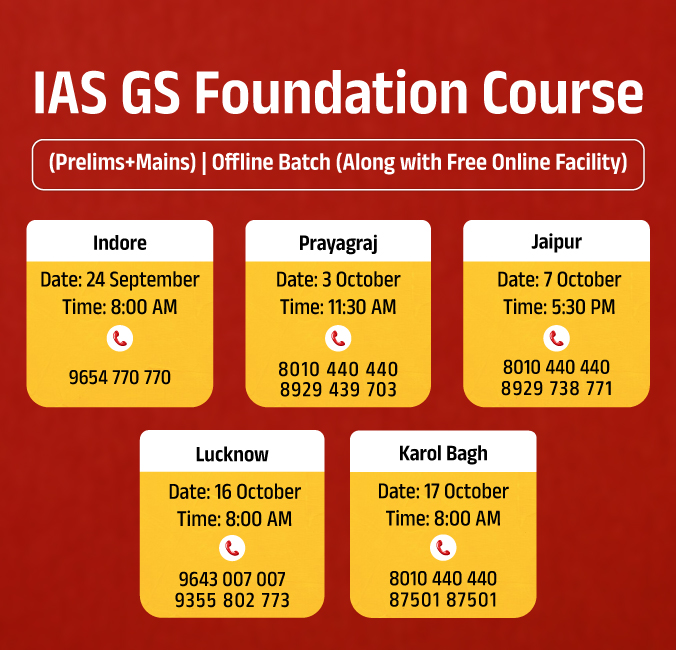
International Relations
Maldives’ President State Visit to India
For Prelims: Neighbourhood First policy, SAGAR (Security and Growth for All in the Region) Vision, Treasury Bills, Currency Swap, Indian Ocean Region, Free Trade Agreement, Digital Public Infrastructure (DPI), Unified Payments Interface, One Sun One World One Grid, Indian Council for Cultural Relations, Colombo Security Conclave.
For Mains: Significance of a healthy India-Maldives relations for maintaining peace, stability and prosperity in the Indian Ocean region.
Why in News?
Recently, Maldives President Mohamed Muizzu paid a four-day state visit to India and called New Delhi a valued partner.
- The visit is significant as President Mohamed Muizzu earlier focused on capitalising on anti-India sentiments and his ministers' derogatory remarks against the Indian Prime Minister.
What are the Key Outcomes of the Visit?
- Strengthening Bilateral Ties: India reaffirmed its commitment to supporting the Maldives under its Neighbourhood First policy and the SAGAR (Security and Growth for All in the Region) vision.
- Emergency Financial Assistance: India provided Treasury bills (T-bill) worth USD 100 million to address its urgent financing needs.
- In addition, India extended a USD 400 million and Rs 30 billion bilateral currency swap agreement to further support the Maldives in managing its financial difficulties.
- Comprehensive Economic and Maritime Security Partnership: Both countries agreed to transform the relationship into a Comprehensive Economic and Maritime Security Partnership.
- This framework will be people-centric, future-oriented, and an anchor for stability in the Indian Ocean Region.
- Development Cooperation: India and Maldives will prioritise the timely completion of the Greater Male Connectivity Project (GMCP) and conduct a feasibility study for connecting Thilafushi and Giraavaru islands.
- Both sides will collaborate on developing a commercial port at Thilafushi, expanding transshipment and bunkering services, and maximising the potential of airports like Hanimaadhoo and Gan.
- Trade and Economic Cooperation: The two sides agreed to initiate discussions on a bilateral free trade agreement, local currency trade settlement, investment promotion, economic diversification and boosting tourism.
- Digital and Financial Cooperation: The two sides agreed to cooperate in the domain of Digital Public Infrastructure (DPI) by launch of India's Unified Payments Interface (UPI), Unique Digital Identity, Gati Shakti Scheme and other digital services that will enhance e-governance and delivery of services.
- India launched RuPay card in Maldives to enhance ease of payments for Indian tourists visiting Maldives.
- Energy Cooperation: Both sides will collaborate on renewable energy and energy efficiency projects to enable the Maldives to meet its climate goals.
- India will assist in the Maldives' participation in the One Sun One World One Grid initiative, a global solar energy project.
- Health Cooperation: Jan Aushadhi Kendras will be set up across the Maldives to supply affordable generic medicines from India.
- Both countries will collaborate on mental health services, drug de-addiction, and emergency medical evacuation capacity-building efforts.
- Defence and Security Cooperation: Both sides acknowledged the importance of completing the Maldives National Defence Force (MNDF) 'Ekatha' harbour project at Uthuru Thila Falhu (UTF), funded by India, which will boost MNDF's operational capabilities.
- Food Security: Both countries agreed to jointly work in establishing Agriculture Economic Zone and tourism investments in Haa Dhaalu atoll and fish processing and canning facility at Haa Alifu atoll with Indian assistance.
- Capacity Building and Training: A Start-up Incubator-Accelerator will be established in the Maldives to foster youth innovation and entrepreneurship.
- People-to-People Linkages: Both countries decided to establish consulates in Bengaluru (India) and Addu City (Maldives) to promote people-to-people interactions.
- Set up higher education institutions, skill centres, and an Indian Council for Cultural Relations Chair at the Maldives National University.
- Regional and Multilateral Cooperation: India and the Maldives reaffirmed their commitment to close cooperation in regional and international fora, particularly in the Colombo Security Conclave (CSC).
- Political Exchanges: Both agreed to formalise cooperation between their respective parliaments, recognising shared democratic values as a driver of bilateral relations.
- Establishment of High-Level Core Group: To ensure timely and effective implementation of the cooperation framework, a new High-Level Core Group will be established.
Why Maldivian President Soften his Anti-india stance?
- Economic Crisis in the Maldives: The Maldives is currently facing a severe economic crisis, with its foreign exchange reserves dwindling to just USD 440 million, enough to cover only 1.5 months of imports.
- This is compounded by the threat of a debt default, as flagged by Moody’s, which downgraded the country’s credit rating.
- Economic Dependence: The Maldives' dependence on Indian tourists for its vital tourism industry also plays a role.
- Indian tourists make up one of the top contributors to the Maldives’ tourism economy, and a decline in Indian visitors due to strained relations led to an estimated USD 150 million loss.
- India is the fifth-largest trading partner of the Maldives, providing essential supplies such as food, medicine, and construction materials.
- Strategic Importance of India: Historically, India has been a key player in the Maldives' development and security landscape. Alienating India could undermine the Maldives' regional stability and security.
- Maldivian President acknowledged India’s continued role as the ‘First Responder’ of Maldives in times of need. E.g., water crisis in 2014 in Male and the Covid-19 pandemic.
- India has been the Maldives’ primary security partner, demonstrated by historical operations like "Operation Cactus" (1988), where India intervened to stop a coup attempt.
- Geopolitical Balancing with China: His softened stance indicates a pragmatic approach to balancing relations with both India and China, rather than an outright pivot to China.
- It allows the Maldives to continue benefiting from India’s development and security partnerships while maintaining a diversified foreign policy.
- Political Realism: The tensions between India and Maldives, fueled by political rhetoric and social media spats, were seen as damaging to bilateral relations.
- The visit is a strategic move to ensure that bilateral relations with India remain strong, given the economic and geopolitical importance of the partnership.
What is the Significance of Maldives for India?
- Strategic Location: The Maldives is situated along key International Shipping Lanes (ISLs) in the Indian Ocean, vital for global trade and energy flows.
- Around 50% of India’s external trade and 80% of its energy imports pass through these lanes.
- Countering Chinese Influence: India views the Maldives as a critical player to counterbalance China's growing influence in the region and ensure its security.
- Indian Ocean as India’s Backyard: A favourable and positive maritime environment in the Indian Ocean is essential for the fulfilment of India’s Strategic priority. For this, Maldives is an important partner in the Indian Ocean Region
- Climate Change Collaboration: The Maldives, with its vulnerability to sea-level rise and climate disasters, is an important partner for India in climate change adaptation and mitigation strategies.
Conclusion
Maldives President Muizzu's recent state visit to India marked a significant shift in bilateral relations, moving from initial tensions to renewed cooperation. Amid economic challenges, the visit underscored India's crucial role as a key partner for Maldives, fostering strategic and economic ties while stabilising the region's geopolitical balance.
|
Drishti Mains Question: With reference to the Maldives' economic crisis and India’s financial aid, discuss how economic factors influence diplomacy. |
UPSC Civil Services Examination, Previous Year Questions (PYQs)
Mains
Q. Discuss the geopolitical and geostrategic importance of Maldives for India with a focus on global trade and/energy flows. Further also discuss how this relationship affects India’s maritime security and regional stability amidst international competition? (2024)
Q. Discuss the political developments in the Maldives in the last two years. Should they be of any cause for concern to India? (2013)


Important Facts For Prelims
Nobel Prize 2024 in Physiology or Medicine
Why in News?
Recently, the 2024 Nobel Prize in Physiology or Medicine was awarded to Victor Ambros and Gary Ruvkun by the Nobel Assembly at Karolinska Institutet in Stockholm, Sweden.
- The scientists won the esteemed prize for the discovery of microRNA and its role in post-transcriptional gene regulation.
Note:
- The 2023 Nobel Prize in Physiology or Medicine was awarded to Katalin Karikó and Drew Weissman for their work on messenger Ribonucleic Acid (mRNA).
- The 2024 Nobel Prize in Physics has been awarded to John J. Hopfield and Geoffrey E. Hinton, for modern artificial neural networks (ANNs) and machine learning (ML).
What Discovery of microRNA led to the Nobel Prize?
- Early Research:
- C. elegans Model: Ambros and Ruvkun studied the roundworm C. elegans to understand tissue development.
- Mutant Strains: They analyzed mutant strains lin-4 and lin-14 with abnormalities in their genetic programming.
- Ambros' Research:
- Ambros found that lin-4 suppressed lin-14 activity but couldn't determine how.
- He cloned lin-4 and discovered a short RNA molecule without protein-coding potential. It suggested the RNA molecule might inhibit lin-14.
- Ruvkun's Research:
- He found that lin-4 didn't block lin-14 mRNA production but regulated it later by inhibiting protein production. A short lin-4 sequence matched key complementary segments in lin-14 mRNA.
- Ambros and Ruvkun found that lin-4 microRNA attaches to lin-14 mRNA and blocks protein production.
- Significance:
- let-7 discovery: Ruvkun's group later discovered let-7, a microRNA present throughout the animal kingdom.
- Current understanding: The microRNAs are abundant and play a crucial role in gene regulation across multicellular organisms.
Note:
- Lin-4: It is a microRNA, identified from a study of developmental timing in the nematode Caenorhabditis elegans. It was the first to be discovered of the miRNAs, a class of non-coding RNAs involved in gene regulation.
- lin-14: It is a heterochronic gene that controls the timing of developmental events in the nematode Caenorhabditis elegans.
- Heterochronic genes are genes that control the timing of cell and tissue development in an organism.
What are microRNAs?
- The body synthesizes proteins through a complex process involving two main steps: transcription and translation.
- In the transcription step, a Deoxyribonucleic acid (DNA) sequence in the cell nucleus is copied into messenger Ribonucleic Acid (mRNA).
- The mRNA then exits the nucleus, moves through the cell fluid, and attaches to a ribosome.
- In the translation step, transfer RNA (tRNA) delivers specific amino acids to the ribosome, where they are linked together in the sequence dictated by the mRNA to form the protein.
- Micro RNA (miRNA) plays a regulatory role in protein production by binding to and silencing mRNA at a specific stage in the process.
- This regulation occurs through a mechanism called post-transcriptional gene regulation, ensuring protein synthesis is controlled.
About the Winners
- Ambros and Ruvkun are both American biologists. Ambros currently works at the Programme in Molecular Medicine at the University of Massachusetts.
- Ruvkun is a professor of genetics at Harvard Medical School and conducts research on microRNA and RNA interference.
- H. Robert Horvitz, under whom both biologists worked as postdoctoral fellows, won the Nobel Prize in Physiology or Medicine in 2002.
- Ambros was the first to clone a microRNA, and Ruvkun cloned the second, marking significant milestones in the field.
What are the applications of the Discovery?
- Abnormal Regulation and Diseases:
- Cancer: Abnormal microRNA regulation can contribute to cancer development.
- Mutations: Mutations in microRNA genes have been linked to conditions like hearing loss, eye, and skeletal disorders.
- Future Applications:
- While microRNAs hold great potential, there are currently no direct clinical applications.
- Further research and a deeper understanding of microRNAs are necessary for future applications.
UPSC Civil Services Examination, Previous Year Question (PYQ)
Q. Who among the following discovered heavy water? (2008)
(a) Heinrich Hertz
(b) H.C. Urey
(c) G. Mendel
(d) Joseph Priestley
Ans: (b)


Important Facts For Prelims
Contributions and Legacy of Ratan Tata
Why in News?
Recently, Ratan Naval Tata, the former chairman of Tata Group who became a symbol of India's economic resurgence in the 21st century, passed away at a Mumbai hospital at the age of 86.
Who was Ratan Tata?
- About:
- Ratan Naval Tata was a respected Indian businessman and former chairman of Tata Group, one of India’s largest conglomerates.
- He was awarded the Padma Bhushan in 2000 and the Padma Vibhushan in 2008.
- He graduated in architecture from Cornell University before returning to India in 1962 to join the Tata Group, founded by his great-grandfather, Jamsetji Tata.
- He was a licensed pilot, known for his quiet demeanour, relatively modest lifestyle and philanthropic initiatives.
- Ratan Tata remained a visionary leader and a compassionate figure, earning widespread respect in both business and social circles.
- Achievements:
- Ratan Tata played a key role in transforming Tata Group into a global powerhouse, with ventures spanning industries such as steel, automobiles, software, and telecommunications.
- Early in his career, he worked with several Tata companies, including Tata Motors (formerly Telco) and Tata Steel, and revitalised the National Radio & Electronics Company.
- In 1991, he succeeded J.R.D. Tata as chairman of Tata Group.
- He implemented significant organizational reforms such as enforcing retirement ages and promoting young talent to leadership roles.
- He was also awarded with:
- Assam Baibhav by Government of Assam in 2021.
- Honorary Officer of the Order of Australia by King Charles III in 2023.
- Honorary Doctor of Science by IIT Bombay in 2008
- Honorary Knight Grand Cross of the Order of the British Empire (GBE) by Queen Elizabeth II in 2014
- Honorary Citizen Award by Government of Singapore in 2008.
- Contributions:
- Tata set up Tata Teleservices in 1996 and took Tata Consultancy Services (TCS) public in 2004, capitalising on the IT boom.
- His leadership marked significant international acquisitions, including:
- The purchase of Tetley Tea in 2000.
- Acquisition of VSNL (Videsh Sanchar Nigam Limited) in 2002.
- The acquisition of Corus Steel in 2007, one of the largest takeovers by an Indian company.
- The acquisition of Jaguar and Land Rover from Ford in 2008.
- Tata played a key role in Tata Group's acquisition of Air India from the government in January 2022.
- He also launched the Tata Nano, a low-cost car aimed at providing affordable transportation to the Indian masses.
- After stepping down from active leadership, Tata became a prominent investor in Indian startups, backing companies such as Paytm, Ola Electric, and Urban Company.
UPSC Civil Services Examination, Previous Year Question (PYQ)
Q. Consider the following statements in respect of Bharat Ratna and Padma Awards:
- Bharat Ratna and Padma Awards are titles under the Article 18(1) of the Constitution of India.
- Padma Awards, which were instituted in the year 1954, were suspended only once.
- The number of Bharat Ratna Awards is restricted to a maximum of five in a particular year.
Which of the above statements are not correct?
(a) 1 and 2 only
(b) 2 and 3 only
(c) 1 and 3 only
(d) 1, 2 and 3
Ans: (d)


Rapid Fire
Claim of Juvenility
Recently, the Supreme Court ruled that juvenility can be claimed at any stage of criminal proceedings, including after the conviction has become final.
- The court pointed out that juvenility is a right and not subject to waiver due to delays or procedural technicalities.
- The court held that even a final judgement does not prevent a reevaluation of the case if juvenility is in question.
- Section 94 of the Juvenile Justice Act, 2015 allows juvenility claims to be raised even post-conviction, ensuring that the rights of juveniles are protected regardless of procedural delays.
- Similarly, in the Abuzar Hossain Vs State of West Bengal Case, 2012, the Supreme Court had allowed juvenility claims at any stage of legal proceedings.
- As per the Juvenile Justice Act, 2015 a juvenile is defined as a person who has not completed eighteen years of age.
- Juveniles aged 16-18 years would be tried as adults, if charged with heinous crimes.
Read More: Issue with the Juvenile Justice Amendment Act, 2021


Rapid Fire
Rare Rain in the Sahara Desert
Recently, a rare deluge of rainfall has flooded palm trees and sand dunes of the Sahara desert in Morocco.
- The rain was triggered by the northward shift of the Intertropical Convergence Zone (ITCZ), which has moved further north than usual, resulting in equatorial-like downpours in the Sahara.
- ITCZ has produced a powerful extratropical cyclone that swept through northwestern Africa.
- An extra-tropical cyclone is a low-pressure system which develops in latitudes outside the tropics which can bring heavy rainfall.
- Repositioning of ITCZ may be linked to record-high ocean temperatures and climate change.
- Sahara Desert: It is the world's largest hot desert having a length of approximately 4,800 km and a maximum width of 1,800 km.
- It occupies about 31% of the entire African continent.
- It stretches among 11 North African nations including Algeria, Egypt, Mali, Morocco, Western Sahara, Tunisia, Chad, Libya, Mauritania, Niger, and Sudan.
Read More: Deserts in the World


Rapid Fire
World Cerebral Palsy Day
The National Trust for the Welfare of Persons with Autism, Cerebral Palsy, Mental Retardation, and Multiple Disability organised a National Meet to mark World Cerebral Palsy Day (WCPD), focusing on innovation and inclusion for individuals with Cerebral palsy (CP).
- WCPD (6th October every year) is a global movement that started in 2012, uniting individuals with cerebral palsy from over 100 countries to advocate for equal rights, access, and opportunities in society.
- The theme for 2024 WCPD is “Uniquely CP”, which emphasises that a person’s disability does not define their entire identity.
- CP is a group of disorders that affect movement, balance, and posture due to abnormal brain development or damage. It is the most common motor disability in childhood, with symptoms varying significantly among individuals.
- Causes: Majority (85-90%) of CP is congenital, occurring before (during brain development) or during birth. Acquired CP is less common and often linked to infections or head injuries after birth.
- Treatment: It is a permanent, non-progressive condition with no cure, but treatments can enhance symptoms, functioning, and quality of life.
- The National Trust, a statutory body under the Ministry of Social Justice and Empowerment, was established under the "National Trust for the Welfare of Persons with Autism, Cerebral Palsy, Mental Retardation, and Multiple Disabilities" Act (1999).
- Its aim is to create an inclusive society that empowers Persons with Disabilities to live independently with dignity and equal rights.
Read more: Empowering Persons with Disabilities


Rapid Fire
India Eliminates Trachoma as a Public Health Problem
The World Health Organization (WHO) has officially recognized India for eliminating Trachoma as a public health issue.
- Trachoma is a contagious bacterial eye infection caused by Chlamydia Trachomatis, which can lead to irreversible blindness if left untreated.
- It spreads through contact with the eyes, eyelids, nose, or throat secretions of infected individuals.
- It is categorised as a neglected tropical disease and affects around 150 million people globally, with 6 million at risk of blindness.
- Trachoma was a leading cause of blindness in India during the 1950s-60s. India launched the National Trachoma Control Program in 1963, which was later integrated into the National Program for Control of Blindness (NPCB).
- In 1971, Trachoma caused 5% of blindness in India, now reduced to less than 1% through the National Programme for Control of Blindness & Visual Impairment (NPCBVI) and the WHO SAFE strategy.
- India was declared free from infective Trachoma in 2017, with ongoing surveillance from 2019 to 2024.
- The National Trachomatous Trichiasis (TT only) Survey was conducted in 200 endemic districts from 2021-24 as part of WHO's mandate.
- Reports compiled by the NPCBVI team were submitted to WHO for final verification, leading to the declaration that India has eliminated Trachoma as a public health problem.
Read more: Global Report on Neglected Tropical Diseases 2024



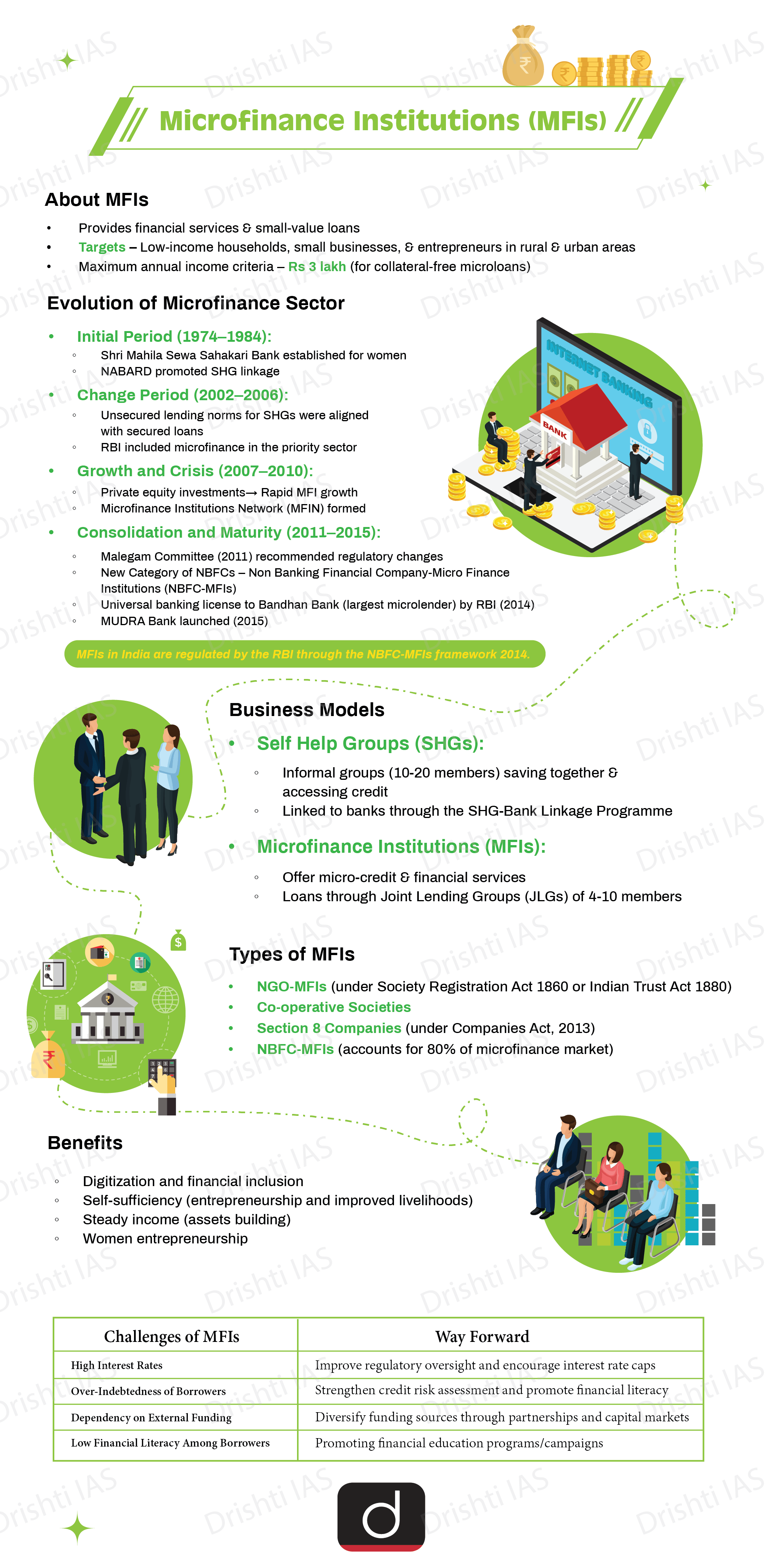
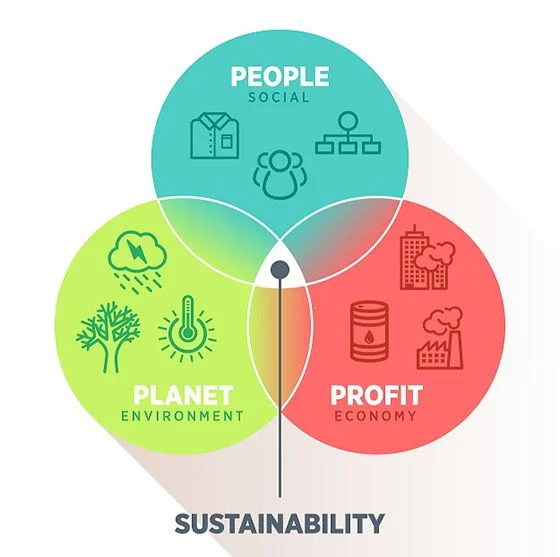
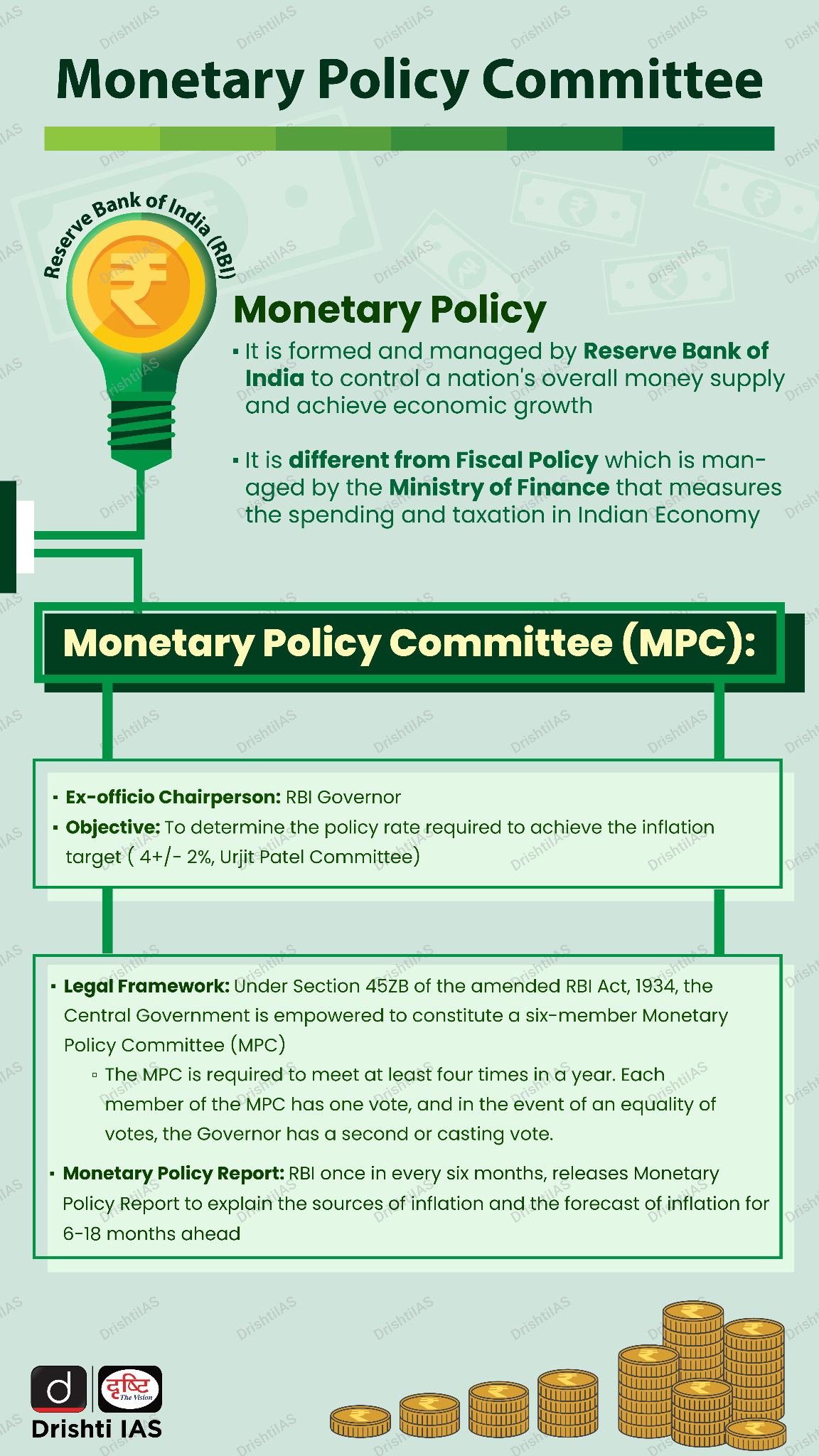

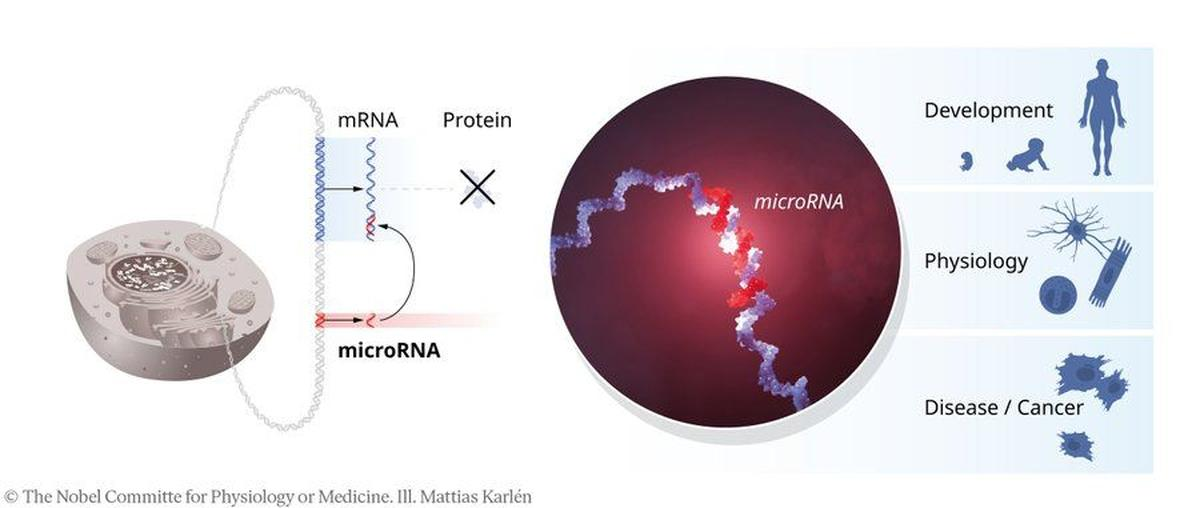
.png)
